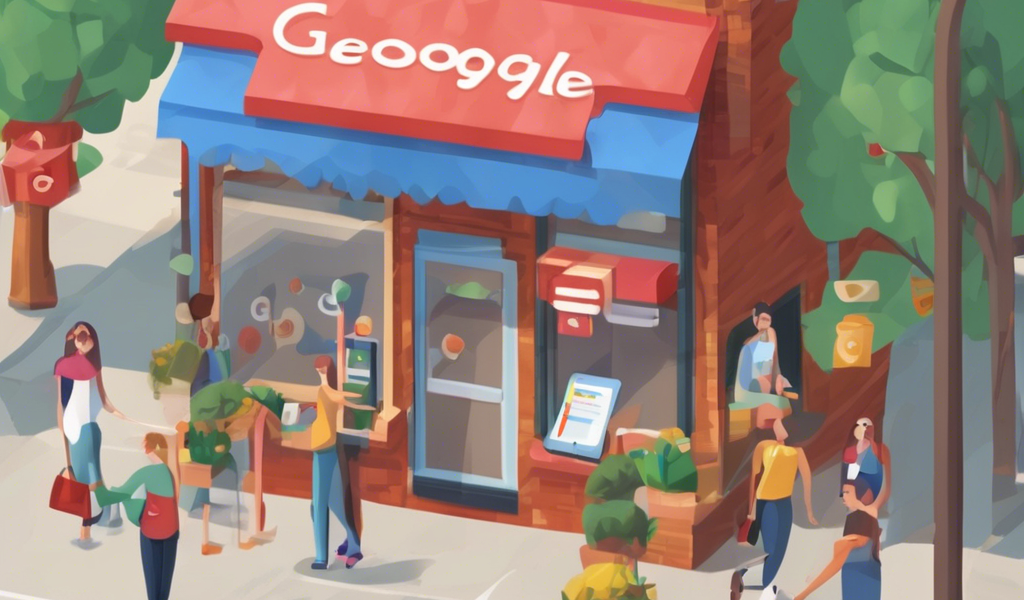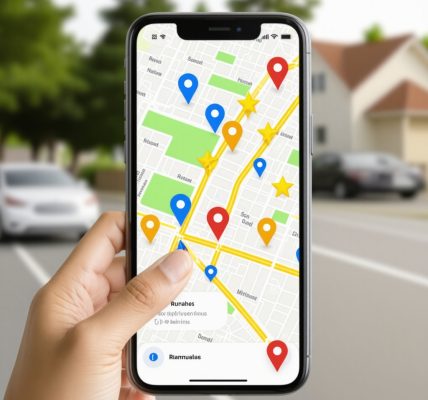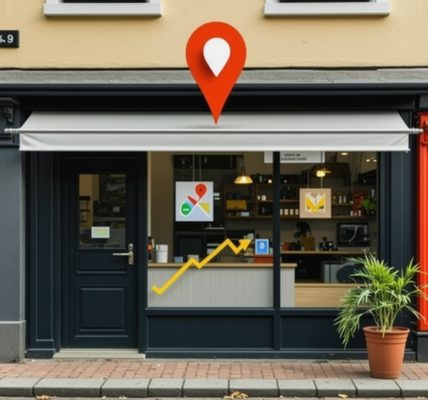Understanding the Importance of Google Maps Optimization for Local SEO
In today’s digital age, optimizing your Google Maps listing is crucial for enhancing your local search visibility. A well-optimized Google Maps listing can significantly boost your local rankings, attracting more customers to your business. As more consumers rely on online searches to find local services, it’s essential to ensure your business is easily discoverable on Google Maps.
Key Steps to Optimize Your Google Maps Listing
To improve your local rankings, follow these key steps to optimize your Google Maps listing:
1. Claim and Verify Your Google My Business (GMB) Listing
The first step in optimizing for local SEO is to claim and verify your Google My Business listing. This ensures you have control over the information displayed about your business. Once verified, you can update your business name, address, phone number, and website link. Make sure to provide accurate and consistent information that matches other citations across the web.
2. Choose Relevant Categories for Your Business
Selecting the right categories is vital for local search. Google uses categories to understand what your business offers and to match it with relevant searches. Choose primary and secondary categories that accurately represent your services. For instance, if you run a bakery, your primary category might be “Bakery,” while secondary categories could include “Cafe” or “Dessert Shop.” You can learn more about effective category selection in our post on Local Business Growth Strategies.
3. Optimize Your Business Description
Your business description is an opportunity to convey what makes your business unique. Use this space to include relevant keywords naturally, as they can help improve your visibility. Highlight your services, your mission, and any unique selling points. Keeping your description engaging and informative can attract more potential customers.
4. Add High-Quality Images
Visual content is essential in attracting customers. Adding high-quality images of your business, products, and services can enhance your listing’s appeal. Images help potential customers visualize their experience and can increase engagement. Regularly update your photos to keep your listing fresh and relevant.
5. Encourage Customer Reviews
Customer reviews play a significant role in local SEO rankings. Encourage satisfied customers to leave positive reviews on your Google Maps listing. Responding to reviews, whether positive or negative, shows that you value customer feedback. A high volume of positive reviews can improve your credibility and attract more potential clients. For more on managing reviews effectively, check our guide on GMB SEO Best Practices.
6. Keep Your Information Updated
Maintaining updated information is crucial for local SEO. If your business hours change or you move locations, update your Google Maps listing accordingly. Inaccurate information can lead to customer frustration and damage your credibility.
Conclusion
Optimizing your Google Maps listing is an essential part of your local SEO strategy. By following these steps, you can enhance your visibility, attract more customers, and ultimately drive more business. With the right optimization practices in place, you’re on your way to achieving better local rankings.
Leveraging Local Keywords for Enhanced Visibility
Using local keywords is essential in optimizing your Google Maps listing. These keywords should reflect your business’s location and services. For instance, if you operate a plumbing service in Austin, include phrases like “Austin plumber” or “emergency plumbing services in Austin”. This strategy helps Google associate your business with local searches. Additionally, integrating these keywords into your business description and posts can further enhance your discoverability.
Understanding the Role of Citations in Local SEO
Citations are mentions of your business name, address, and phone number (NAP) across various online platforms. Consistent citations are crucial for local SEO as they validate your business information to Google. Ensure that your citations are accurate and up-to-date across websites, directories, and social media platforms. For more insights on managing your citations effectively, visit our guide on Maximizing GMB Citation Management.
Utilizing Google Posts for Engagement
Google Posts allow businesses to share updates, offers, and events directly on their Google Maps listing. Regularly posting engaging content can keep your customers informed and encourage them to interact with your listing. Use relevant images, clear calls to action, and local keywords to enhance each post’s effectiveness. This not only improves customer engagement but also signals to Google that your business is active and relevant in your area.
Implementing Local Link Building Strategies
Building local links can significantly boost your Google Maps optimization efforts. Collaborate with other local businesses, sponsors, or community organizations to create mutually beneficial backlinks. Participate in local events or sponsor community activities to generate buzz and earn links from reputable local sites.
Engaging with the Local Community
Engagement with your local community can enhance your business’s reputation and visibility. Hosting workshops, participating in local fairs, or even supporting local charities can increase your exposure. These activities not only foster community relations but also provide opportunities for local press coverage and backlinks. For more strategies on optimizing your local presence, check out our post on Local Business Growth Strategies.
Monitoring and Analyzing Your Google Maps Performance
It’s essential to monitor the performance of your Google Maps listing regularly. Use tools like Google Analytics and Google My Business Insights to track how customers find your listing and what actions they take. Analyzing this data can help you adjust your strategies for better results. For instance, if you notice that most of your traffic comes from mobile searches, you might want to enhance your mobile optimization efforts.
Regularly Updating Your Google Maps Listing
Regular updates to your Google Maps listing can keep your business relevant and visible. This includes updating your business hours, adding new photos, and posting about upcoming events or promotions. Keeping your information fresh not only helps with customer engagement but also signals to Google that your business is active, which can positively influence your local ranking.
Conclusion: Mastering Google Maps Optimization for Local SEO
By implementing these advanced Google Maps optimization techniques, you can significantly enhance your local SEO efforts. From focusing on local keywords and citations to engaging with your community and analyzing your performance, every step contributes to better visibility and customer engagement. With a well-optimized Google Maps listing, you’re better positioned to attract and retain local customers, ultimately driving growth for your business.
Enhancing Customer Engagement Through Google Maps Features
Utilizing the interactive features of Google Maps can significantly boost customer engagement. Features like reviews, Q&A, and direct messaging allow customers to interact with your business in real-time. Encourage satisfied customers to leave positive reviews, as these not only enhance your reputation but also improve your local search ranking. Additionally, promptly answering questions and interacting with your customers through messages can foster a sense of trust and reliability.
Importance of Visual Content in Google Maps Listings
Visual content plays a crucial role in attracting potential customers to your Google Maps listing. High-quality images and videos can provide a virtual tour of your business, showcasing products, services, and the overall ambiance. This visual appeal can significantly influence customer decisions. Ensure that your images are optimized with local keywords in the alt text to enhance visibility in search results. The better your visuals, the more likely customers will choose your business over competitors.
Leveraging User-Generated Content for Authenticity
User-generated content, such as customer photos and reviews, can add credibility to your Google Maps listing. Encouraging customers to share their experiences can create a sense of community and authenticity around your brand. Consider running campaigns or contests that motivate customers to post their photos and tag your business. This not only provides fresh content for your listing but also enhances your local SEO efforts by increasing engagement and visibility.
Utilizing Google My Business Insights for Continuous Improvement
Google My Business Insights offer valuable data regarding customer interactions with your listing. Analyzing metrics such as search queries, views, and actions taken can provide insights into what’s working and what needs improvement. For instance, if you notice that many users are searching for a specific service but aren’t clicking on your listing, it may be time to optimize your description or update your images. Regularly reviewing these insights can help you refine your strategies to better meet customer needs.
Creating a Comprehensive FAQ Section
Including a Frequently Asked Questions (FAQ) section on your Google Maps listing can address potential customer concerns and improve user experience. This section can cover common inquiries about your business, such as operating hours, services offered, and payment methods. An informative FAQ not only enhances customer satisfaction but also helps in ranking for relevant queries. Utilize local keywords in your answers to improve your visibility in search results.
Implementing Seasonal Promotions on Google Maps
Seasonal promotions can drive traffic to your business and enhance customer engagement. Utilize Google Posts to announce special offers or events tied to holidays or local festivities. This strategy not only attracts attention but also creates a sense of urgency, encouraging customers to take immediate action. Make sure to include clear calls to action in your posts, guiding customers on how to redeem these promotions.
Conclusion: Continuous Optimization for Sustained Success
The ever-evolving landscape of local SEO and Google Maps necessitates continuous optimization of your strategies. By actively engaging with customers, leveraging visual and user-generated content, and utilizing insights for improvement, you can maintain a competitive edge in the local market. Regularly updating your Google Maps listing with fresh content and promotions will help you attract and retain local customers, ensuring sustained business growth.
Maximizing Engagement with Google Maps Marketing Tools
To truly harness the power of Google Maps for local SEO, you need to maximize engagement using various marketing tools. By implementing strategies that utilize Google Maps features, you can create a more dynamic presence that attracts potential customers. This involves understanding how to leverage Google My Business effectively, as well as optimizing your listings for better visibility.
Understanding Google My Business Features
Google My Business (GMB) is a free tool that allows you to manage your online presence across Google, including Search and Maps. One of its key features is the ability to post updates about your business. Regularly posting can keep your audience informed about new promotions, services, or events. These updates can significantly impact local search rankings, as they demonstrate active engagement with your customer base. Utilize local keywords in your posts to enhance their reach and effectiveness.
Encouraging Customer Engagement through Reviews
Customer reviews are essential for building trust and credibility in your local market. Positive reviews not only improve your GMB ranking but also influence potential customers’ decisions. Encourage satisfied customers to leave reviews on your Google Maps listing and respond promptly to all reviews, whether positive or negative. This interaction signals to Google that your business is active and engaged, which can improve your local SEO.
Utilizing Google Maps for Local Promotions
Running local promotions through Google Maps can drive foot traffic and improve sales. Consider creating tailored offers that are exclusive to your Google Maps listing. For instance, if you have a brick-and-mortar location, you might offer a discount to customers who check in via Google Maps. This not only incentivizes visits but also helps build a community around your brand, enhancing customer loyalty.
Creating Location-Specific Posts and Updates
Location-specific posts can cater to your target audience directly. Use Google Posts to share updates about new services, events, or special offers that are relevant to your local area. Tailoring your content to your audience’s preferences can increase engagement rates and drive more traffic to your business. Make sure to incorporate local keywords that resonate with your community to improve visibility.
Monitoring and Adapting Your Strategies
Lastly, it’s crucial to monitor the effectiveness of your strategies. Utilize Google My Business Insights to analyze how customers are interacting with your listing. Pay attention to metrics such as the number of views, searches, and customer actions. This data will help you identify what’s working and what needs adjustment. By continually refining your approach, you can enhance your local SEO strategy and maintain a competitive edge in your market.
Frequently Asked Questions About Google Maps Marketing
What is Google Maps marketing?
Google Maps marketing involves optimizing your business presence on Google Maps to attract local customers. This includes managing your Google My Business listing, encouraging customer reviews, and using local SEO strategies to improve visibility in search results.
How can I improve my Google Maps ranking?
To improve your Google Maps ranking, ensure your Google My Business listing is fully optimized with accurate information, engaging photos, and regular updates. Encourage customers to leave reviews and respond to them promptly. Using local keywords in your posts and descriptions can also boost your visibility.
What role do customer reviews play in local SEO?
Customer reviews significantly influence local SEO by enhancing your credibility and trustworthiness. Positive reviews can improve your Google Maps ranking, while actively responding to reviews shows engagement and can positively affect potential customers’ decisions.
How often should I update my Google My Business listing?
You should update your Google My Business listing regularly. Post updates about new products, special promotions, and upcoming events at least once a week to keep your audience engaged and informed while also signaling to Google that your business is active.
Can I run promotions through Google Maps?
Yes, you can run promotions through Google Maps by creating special offers that are exclusive to your Google My Business listing. This can include discounts for customers who check in using Google Maps, which can help drive traffic to your location and increase sales.
How do I track the performance of my Google Maps listing?
You can track the performance of your Google Maps listing using Google My Business Insights. This tool provides valuable metrics, such as the number of views, searches, and customer interactions, allowing you to analyze the effectiveness of your marketing strategies.
What are Google Posts and how should I use them?
Google Posts are updates that you can share through your Google My Business listing, allowing you to inform customers about promotions, events, or news. Use them to engage your audience with location-specific content, ensuring you incorporate local keywords for better reach.
Is Google Maps marketing effective for all businesses?
Google Maps marketing is particularly effective for local businesses that rely on foot traffic, such as restaurants, retail stores, and service providers. However, any business can benefit from having a well-optimized Google My Business listing to increase visibility and reach local customers.
What are some common mistakes to avoid in Google Maps marketing?
Common mistakes include neglecting to update your Google My Business listing, failing to respond to customer reviews, using inaccurate business information, and not optimizing your listing with relevant keywords. Regularly monitoring and refining your strategy can help avoid these pitfalls.
How can I leverage Google Maps for my e-commerce business?
Even for e-commerce businesses, Google Maps can be leveraged by creating a Google My Business listing that provides information about your physical store if applicable, offers local promotions, and attracts customers in your area. It increases brand visibility and can drive traffic to your website as well.
Authority Resources for Google Maps Marketing
To enhance your knowledge and implementation of Google Maps marketing strategies, consider exploring the following trusted resources:
- Google My Business Help Center – Official resource for managing your Google My Business listing.
- Moz’s Ultimate Guide to Google My Business – A comprehensive guide that covers the essentials of GMB and local SEO.
- Search Engine Land’s Guide to Local SEO – Insights and strategies for optimizing local search results.
- BrightLocal’s Local SEO Learning Hub – Offers resources, guides, and tools focused on local SEO practices.
- Neil Patel’s Local SEO Guide – Detailed information on local SEO techniques, including Google Maps optimization.
Conclusion
In conclusion, mastering Google Maps marketing is essential for any business looking to thrive in the local SEO landscape. By optimizing your Google My Business listing, encouraging customer reviews, and leveraging local promotions, you can significantly enhance your visibility and engagement with potential customers. Regularly monitoring your performance and adapting your strategies will ensure you stay ahead of the competition. Utilize the tools and insights shared in this article to boost your local SEO efforts effectively, and watch your business grow in the digital age.




The detailed breakdown in this post really highlights how multifaceted optimizing a Google Maps listing can be for local SEO. In my experience managing a small retail store, I’ve noticed that paying close attention to the categories selected for my business played a big role in improving visibility. Customers often search for very specific services, so ensuring those are accurately represented in the categories has helped target the right audience. Another point that resonates with me is the emphasis on customer reviews. I’ve found that not just getting reviews but actively responding to them has built more trust within the community. It signals engagement and shows potential customers that their feedback is valued. Also, regularly updating photos and posts has kept our listing fresh, which I believe positively influences rankings. One challenge I faced was keeping citations consistent across different platforms, but this post’s advice about maintaining uniform contact info is definitely a best practice. Overall, integrating these optimization tactics has led to more foot traffic and higher conversion rates for my business locally.